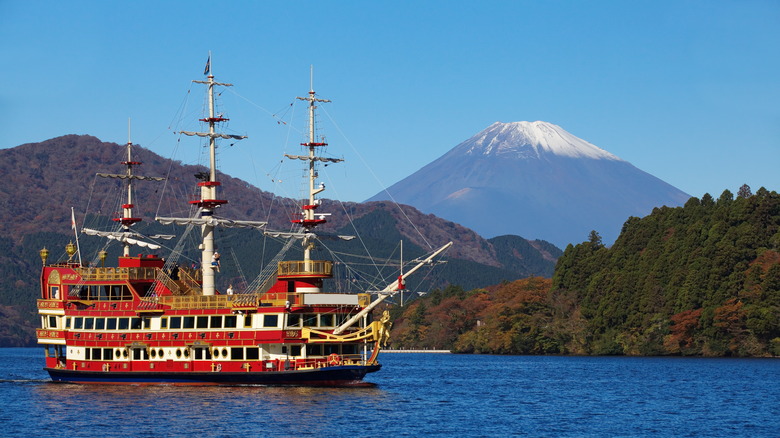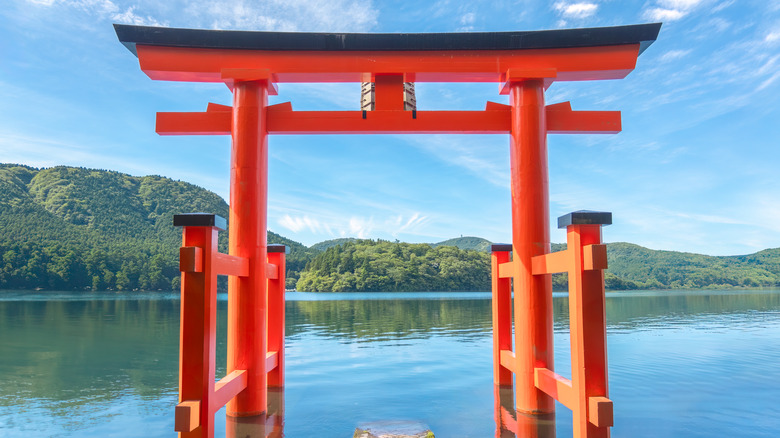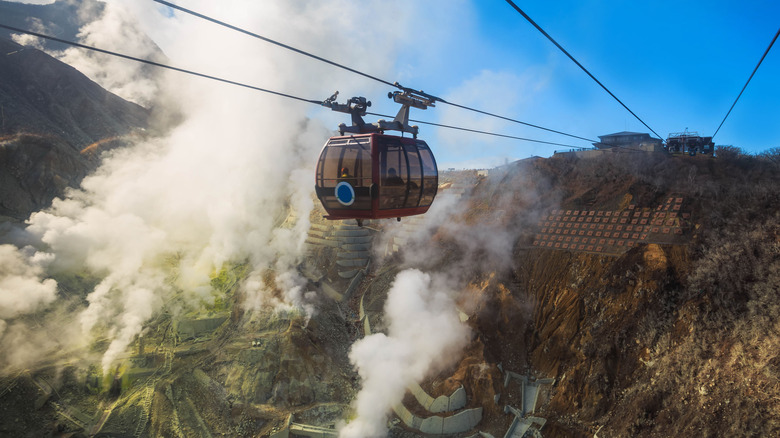Take A Break From The Busy Cities In Japan At This Beautiful Destination
When you're exploring big cities like Tokyo and Osaka, it's not always readily apparent that mountains, not skyscrapers, make up three-fourths of Japan's landscape. For its part, Tokyo Metropolis, as it's officially known, is a sprawling capital that's really a prefecture containing numerous wards, towns, and cities within a city. The late author and Japanophile Donald Richie compared it to poet Samuel Johnson's view of London, suggesting that when a person is tired of Tokyo, they're "tired of life."
There's so much to see and do here that you could almost never get bored wandering Tokyo or Osaka's streets. However, there may be times when you want to leave the city behind and experience a different side of Japan. This is possible within the city limits in places like Minoo Park, Osaka or Okutama, Tokyo. The latter even has a campground where you can spend the night in a spooky cabin featured in the Japanese horror movie "Ringu."
If you had something less scary and more idyllic in mind, another place that's doable as a day trip from Tokyo is Hakone. As part of the Fuji-Hakone-Izu National Park, this beautiful hot spring town will show you a caldera lake, a volcanic steam zone, a forest shrine with a floating torii gate, and an open-air art museum that's not to be missed. If you catch it at the right time of day and under the right weather conditions, you might also see an iconic lake view of Mount Fuji from Hakone.
Lake Ashinoko and Hakone Shrine
Hakone is located in Kanagawa Prefecture, which neighbors Tokyo Metropolis to the south. This is the same prefecture where former U.S. president Barack Obama ate green tea ice cream in the shadow of the Great Buddha of Kamakura. It's also where Yokohama, Japan's second-largest city and another place that's just as fabulous as Tokyo, is located. In Hakone, however, you'll find a nice getaway from the urban jungle, starting at Lake Ashinoko. This caldera lake is the remnant of a volcanic eruption that occurred about 3,000 years ago.
The Hakone Sightseeing Cruise has boats designed to look like grand pirate ships as they cross the lake. A cruise is one of the best ways to get that view of Mount Fuji, peeking out from behind the lake's other mountainous shores on a clear day. Unless it's unusually foggy — which could add an air of mystery to the whole experience — you should also be able to see Hakone Shrine's vermillion torii or "gate of peace" seemingly floating atop the lake. The Shinto shrine was founded in the year 757, and it has a path with lanterns and trees leading from the gate to its main hall in the forest.
Hakone is an especially popular destination in autumn when the changing of the leaves occurs. For an elevated view of Lake Ashinoko and the fall colors in the surrounding mountains, head up to Moto-Hakone, an area not far from the pier and ticket counter for the sightseeing cruise.
The Great Boiling Valley and Hakone Open-Air Museum
Another way to get a bird's-eye view of Hakone is via the Hakone Ropeway. If you take a sightseeing cruise from Moto-Hakone, you'll land in Togendai, where you can access the ropeway. Its gondolas travel over the valley of Owakudani, where you can see sulfurous steam venting up from the ground in an active volcanic zone. (The last minor eruption happened in 2015, but hiking trails often close due to high levels of volcanic gas.)
In Japanese, the name Owakudani means the "Great Boiling Valley." This same area used to be called Ojigoku, meaning "the Great Hell." That might sound like something out of another Japanese horror movie, but it's the ethereal nature of Owakudani that makes it such a unique stop-off. Riding the ropeway, you have to transfer gondolas at Owakudani, so you might as well be adventurous and snack on one of the black, boiled eggs famously served in this area. In July 2023, a local teen's science project proved that the black coating the eggs develop is an organic compound called melanoidin, which results naturally from them being exposed to sulfur in Hakone's hot springs.
No trip to Hakone would be complete without a visit to its winding Open-Air Museum. Here, you can see a collection of Pablo Picasso's works among other indoor and outdoor exhibits. One of the most impressive exhibits is the Symphonic Sculpture, where a spiral staircase will take you up through a tower of stained glass.


